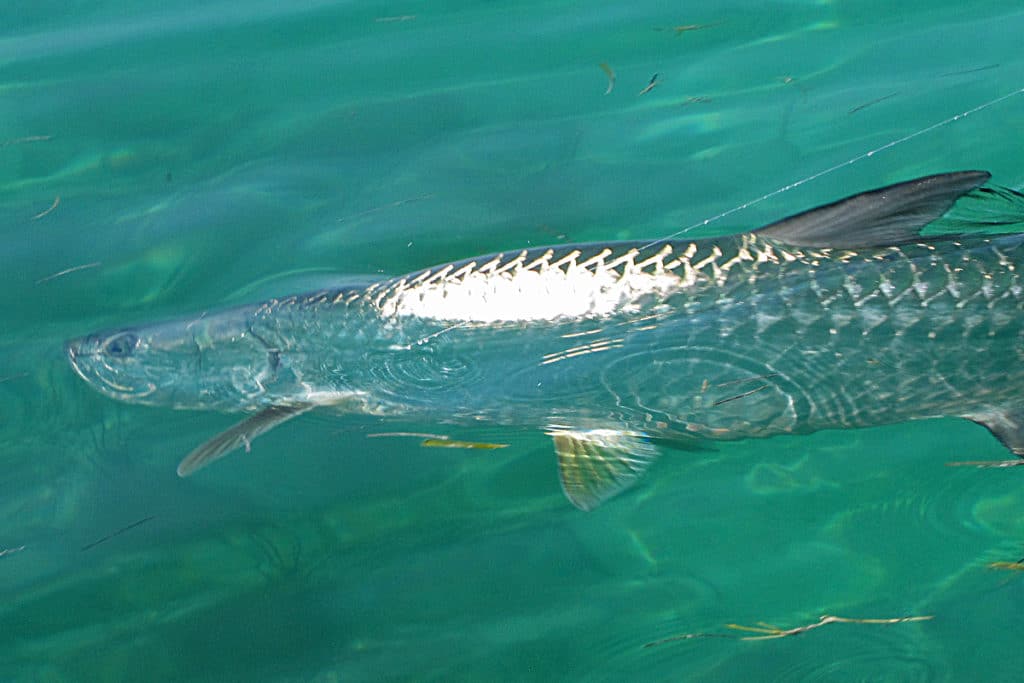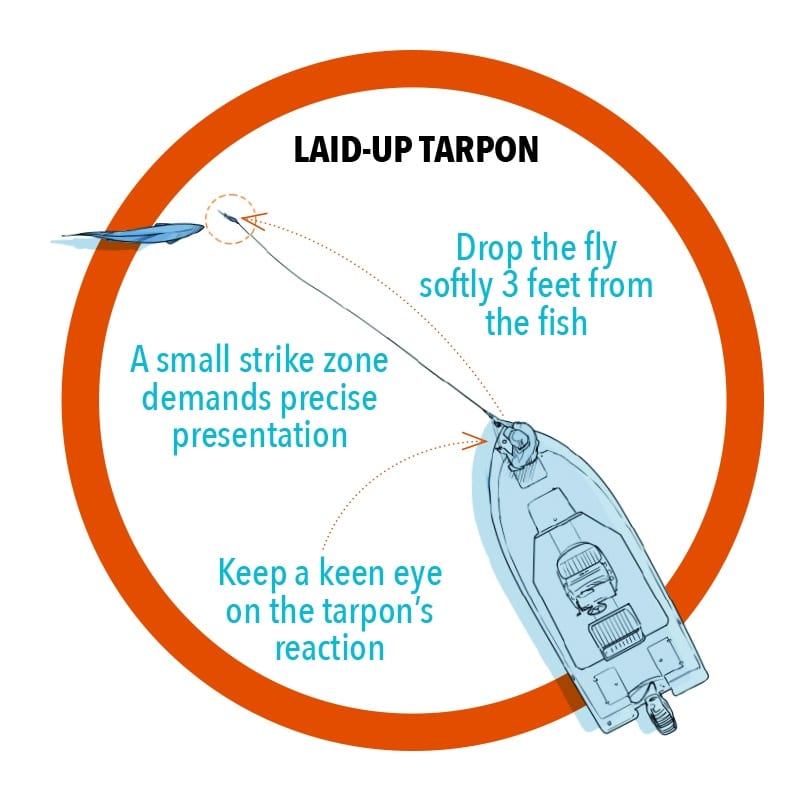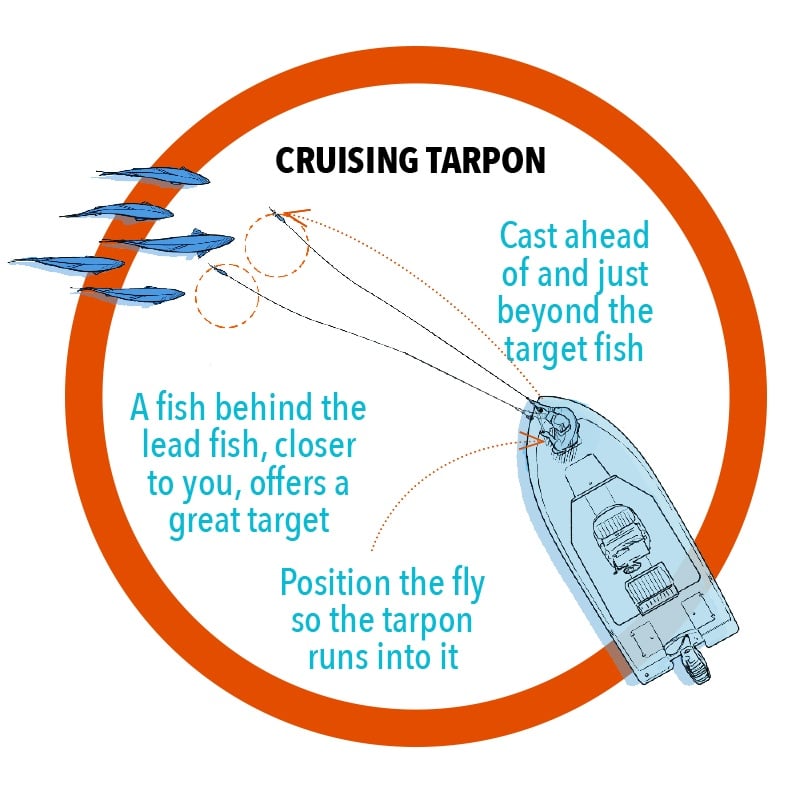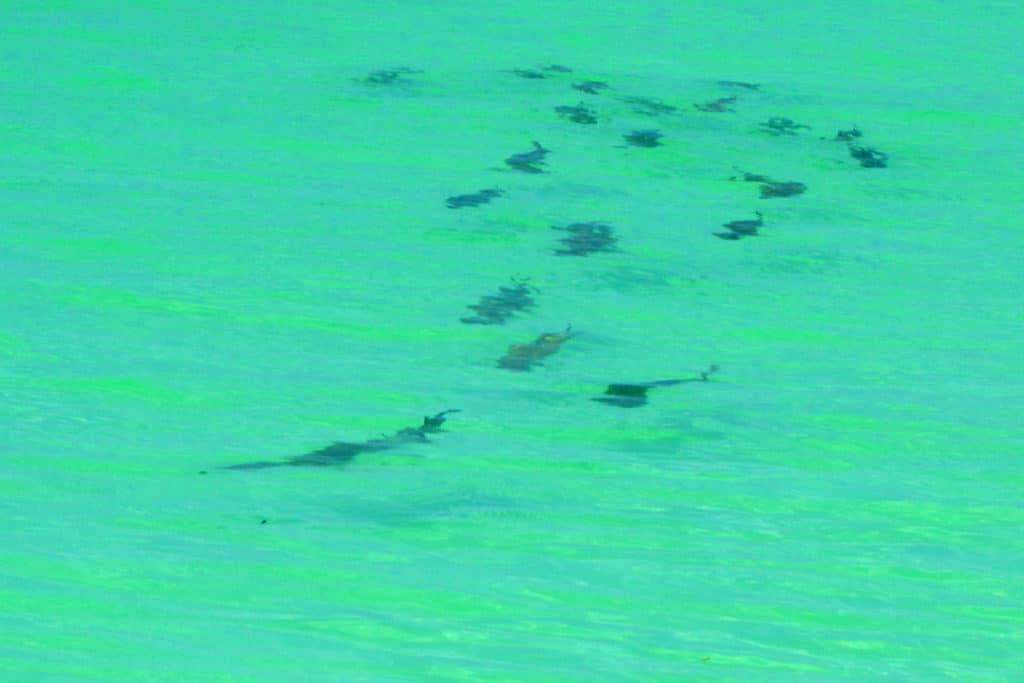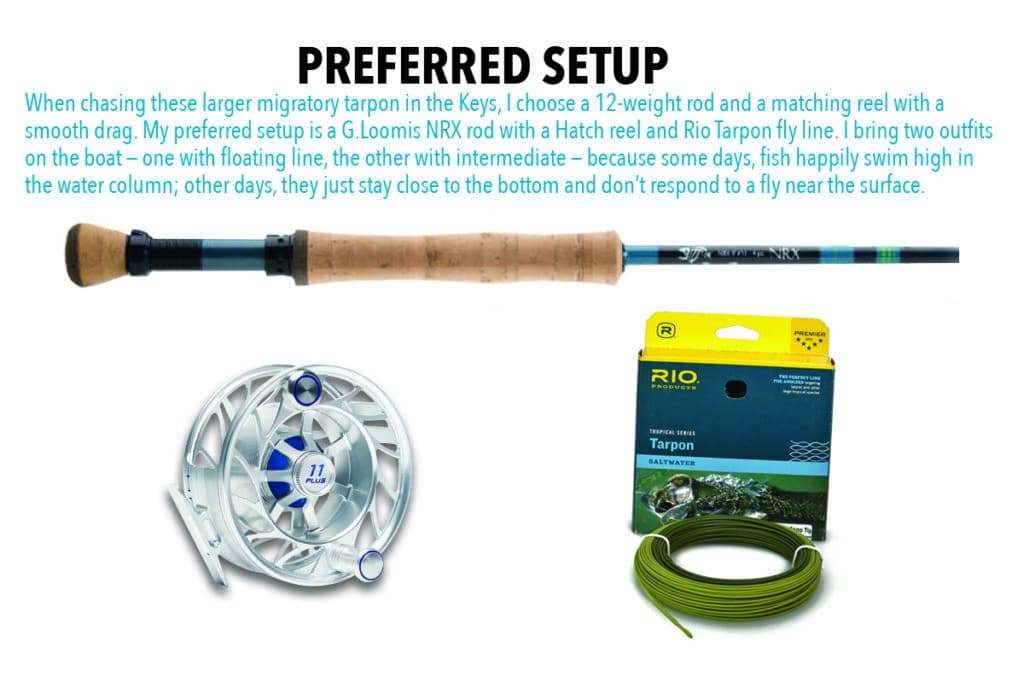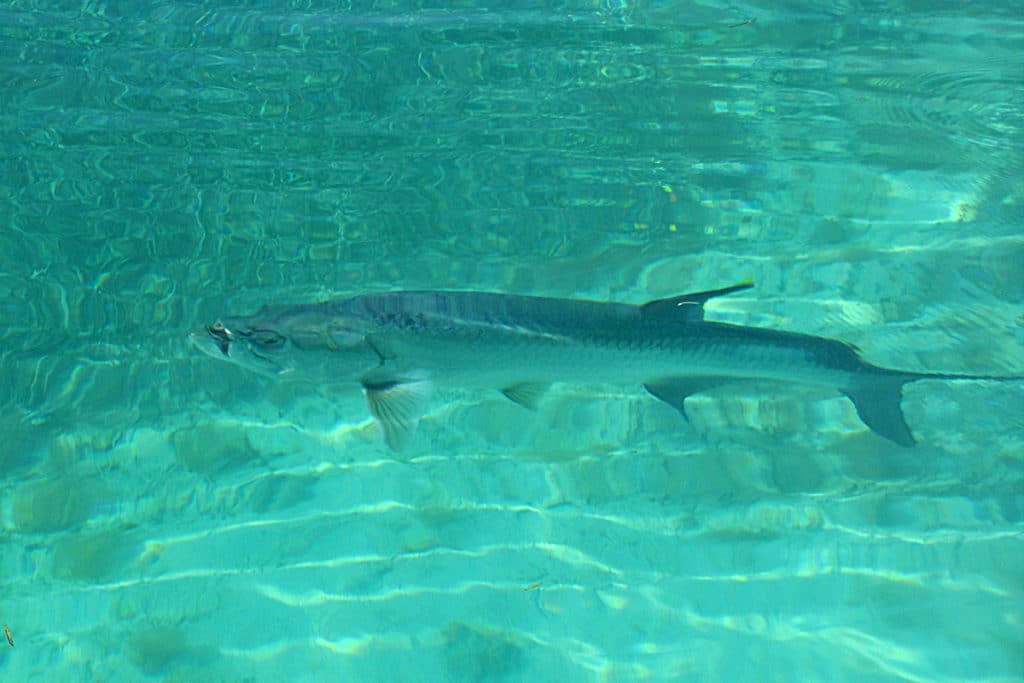Undoubtedly, the tarpon is one of the world’s most exciting game fish. When you find yourself standing on the bow of a flats skiff, fly rod in hand, watching 100-plus-pound fish come right at you, it’s hard not to get weak in the knees. A number of places offer good action, but every spring, thousands of tarpon migrate down to South Florida, making for tremendous opportunities that attract anglers from all over intent on catching tarpon on fly — including yours truly.
Laid-up Tactics: Out on the water, you typically face two different scenarios: You will either be casting to laid-up tarpon or to swimming fish. Laid-up fish, which usually pose the best option for a successful hookup, move slowly, and many times, they roll on the surface. Casting to a stationary or slow-moving tarpon isn’t overly challenging, but the trick is to present the fly in such a way that the fish won’t have to go out of its way to eat it. Too far and the tarpon won’t see it or plainly refuse to change course to grab the fly; too close and you will, of course, spook the fish.
Keep Calm: When you get the bite, stay cool and let the fish turn its head. Once it turns, set the hook with a couple of good jabs of the rod in the opposite direction and be ready for one of the most explosive exits in fishing. Next, focus on clearing your line and allow the fish to settle down from its initial run. Then, it’s time to get to work, applying maximum pressure at all times to bring the fight to an end in a reasonable amount of time and ensure a healthy release.
Tackling Swimmers: Coaxing cruising tarpon to take a fly calls for a different tactic. These fish often travel in strings of eight to 20 or more — especially on the ocean side, where the water is usually clear and there are more anglers and watercraft to avoid along the way. You often hear people say those fish won’t eat, but they do. It just takes more finesse to draw a take. The key is to get the fly in the fish’s strike zone, right in its face, without spooking it. You do that by casting ahead of the fish and letting it swim into your fly as you start to strip. The closer the fish gets to your fly, the better your chances of getting an eat. If a tarpon starts to track your fly (following it closely), it’s up to you to entice it to commit. Sometimes it’s just a matter of changing the pace. Other times jiggling the rod tip to make the fly wiggle as you strip is what does it.
Faster Than They Appear: Cruising tarpon are typically swimming faster than it looks. You must anticipate that and cast just ahead of where you think the fish will be when you deliver the fly. You’ll need to lead the fish even more if it’s swimming near the bottom and you are using an intermediate line. The line and fly require additional time to sink to the fish’s level.
Leader Solutions: You can buy pre-made tarpon leaders, but I tie my own and use as long a leader as I can get away with: 12 to 14 feet on calm days. Tarpon have big eyes and see really well in calm, clear water, so I also opt for fluorocarbon. On windy days — common in South Florida in spring — I scale back to 9- or 10-foot leaders. With a chop on the water, chances of spooking fish decrease, and since a shorter leader turns over better, you’ll cast more accurately. By the way, set the drag at a third of the class tippet strength. And if you make your own leaders, remember to add a shock tippet at the end to prevent chafing from a tarpon’s coarse lips.
When you take up tarpon fishing, you are bound to experience many heart-pounding moments. And once you put a silver king in the air, you will be hooked for life.
